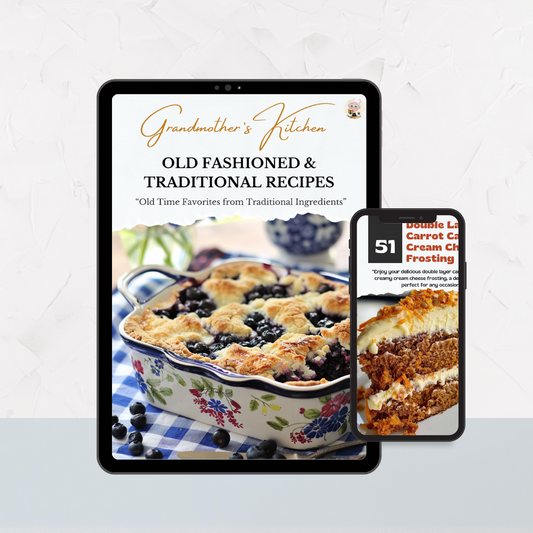Carrot Pineapple Cake with Fluffy Cream Cheese Frosting Recipe

Share
How I Came to Really Appreciate Pineapple and Its Diversity
During a trip to Hawaii, I toured a pineapple plantation and experienced the incredible sweetness of freshly harvested pineapples. The vibrant, sun-ripened fruit was unlike anything I had tasted before, juicy and bursting with tropical flavor. This experience stayed with me, especially when I attended a birthday party where they served a pineapple upside-down cake. The cake was a revelation—tender, moist, and perfectly infused with the rich sweetness of caramelized pineapple slices. It immediately took me back to those lush Hawaiian landscapes. Ever since, this cake has been my go-to dessert for special occasions, capturing the tropical essence I came to love on the islands.
Did You Know?
The origins of carrot cake date back to medieval times when sweeteners were scarce, and carrots were used as a substitute. In Hawaii, the addition of pineapple to carrot cake adds a tropical twist, providing a burst of flavor and moisture. Pineapple is not only delicious but also packed with vitamins, enzymes, and antioxidants. It contains bromelain, an enzyme that aids in digestion and reduces inflammation. This fusion of ingredients not only enhances the cake's taste but also boosts its nutritional value.
Ingredients
Cake
2 cups all-purpose flour
2 teaspoons baking soda
1 1/2 teaspoons ground cinnamon
1/2 teaspoon ground nutmeg
1/2 teaspoon salt
1 cup vegetable oil
1 cup granulated sugar
1 cup brown sugar, packed
4 large eggs
2 teaspoons vanilla extract
3 cups grated carrots
1 cup crushed pineapple, drained
1 cup shredded coconut
1 cup chopped walnuts or pecans
Fluffy Cream Cheese Frosting
16 oz cream cheese, softened
1 cup unsalted butter, softened
6 cups powdered sugar
2 teaspoons vanilla extract
1/4 cup heavy cream
Garnish
Finely grated raw carrots
Piped dollops of frosting
Finely chopped nuts
Instructions
Preheat your oven to 350°F (175°C) and grease three 9-inch round cake pans.
Prepare the Cake Batter
In a medium bowl, whisk together the flour, baking soda, cinnamon, nutmeg, and salt.
In a large bowl, beat the oil, granulated sugar, and brown sugar until well combined. Add the eggs one at a time, beating well after each addition. Stir in the vanilla extract.
Personal Tip: Adding the eggs one at a time helps to create a lighter batter by incorporating more air.
Gradually add the dry ingredients to the wet ingredients, mixing just until combined. Fold in the grated carrots, crushed pineapple, shredded coconut, and chopped nuts.
Bake the Cakes
Divide the batter evenly among the prepared cake pans. Bake for 25-30 minutes, or until a toothpick comes out clean. Cool in the pans for 10 minutes, then transfer to wire racks to cool completely.
Personal Tip: Rotate the cake pans halfway through baking to ensure even cooking. Cooling the cakes in a draft-free area will help prevent them from drying out too quickly.
Prepare the Fluffy Cream Cheese Frosting
In a large bowl, beat the cream cheese and butter together until smooth. Gradually add the powdered sugar, then beat in the vanilla extract and heavy cream until fluffy.
Personal Tip: Beating the cream cheese and butter together for a few extra minutes will make the frosting fluffier and lighter.
Assemble the Cake
Place one cake layer on a serving plate and spread a generous layer of cream cheese frosting on top. Add the second cake layer and repeat. Top with the third layer and frost the entire cake.
Personal Tip: Chill the cake for 10-15 minutes after each frosting layer to help set the frosting and prevent the layers from sliding.
Garnish with finely grated raw carrots, piped dollops of frosting, and chopped nuts.
Nutritional Information (Per Serving): Calories: 620, Protein: 6g, Carbohydrates: 80g, Sugars: 60g, Total Fat: 32g, Saturated Fat: 14g, Sodium: 350mg, Fiber: 3g
Kitchen Tips, Great Ideas, How to Save Money
-
Fresh Ingredients: Use fresh, high-quality ingredients to enhance the flavor and nutritional value of your cake. Freshly grated carrots and high-quality pineapple will make a significant difference in taste and texture.
-
Pineapple: Using fresh pineapple instead of canned can give your cake a fresher taste and fewer added sugars. Simply crush the fresh pineapple yourself.
-
Whipped Cream: For an even fluffier frosting, consider whipping the cream cheese and butter mixture for a few extra minutes. This will incorporate more air and make the frosting lighter.
-
Nut Alternatives: If you’re allergic to nuts or prefer a different flavor, substitute walnuts or pecans with almonds or leave out the nuts altogether.
-
Coconut: For a more intense coconut flavor, lightly toast the shredded coconut before adding it to the batter.
-
Storage: Store the assembled cake in an airtight container in the refrigerator. This helps keep the cream cheese frosting firm and the cake moist.
-
Freezing: You can freeze unfrosted cake layers wrapped in plastic wrap for up to 2 months. Thaw them overnight in the refrigerator before assembling the cake.
-
Decorating: Use a piping bag with different nozzles to create beautiful designs with the frosting. This can add an extra touch of elegance to your cake.
-
Eco-Friendly: Use reusable silicone baking mats instead of parchment paper and buy ingredients in bulk to reduce packaging waste.
-
Cost-Saving Tips: Buy nuts and baking ingredients during sales or from bulk stores. Fresh fruits like pineapple and carrots are often cheaper when bought in season.
Let’s Learn About Pineapple
Pineapples are tropical fruits native to South America, particularly Paraguay and Brazil. They are grown in warm climates, with Hawaii, Costa Rica, Thailand, and the Philippines being the leading producers today. The plant grows low to the ground and takes up to 18-24 months to mature. Pineapples are typically hand-harvested by carefully cutting the fruit from the plant when it reaches peak ripeness.
Pineapples are not sprayed as heavily as other fruits, but they are still often treated with pesticides, especially when mass-produced. For the best quality, look for organic or pesticide-free labels when possible. Fresh pineapples have a distinct sweet aroma, golden color, and a firm but slightly soft texture.
When choosing pineapples, make sure the leaves on top are green, the skin is firm, and the fruit has a sweet fragrance. For cleaning, it's important to remove the outer skin and core, as these are not edible.
Frozen pineapple is also a great option, especially for smoothies or baked dishes, as it retains most of its nutrients after freezing. Fresh pineapples are rich in vitamin C, manganese, and digestive enzymes like bromelain, making them a nutritious and versatile fruit to enjoy in sweet or savory dishes.










